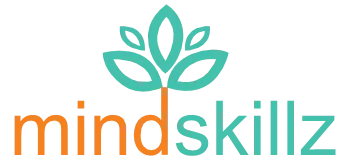Introduction: What is Team Communication Development?
Team communication development refers to the systematic process of building, enhancing, and streamlining the way team members share information, collaborate, and align around goals. It involves training exercises, communication frameworks, and culture-building initiatives that help employees at all levels communicate clearly, listen actively, and resolve conflicts effectively.
In organizations today, especially in India’s dynamic corporate environment, poor communication can cost companies productivity, innovation, and talent retention. According to a McKinsey report, teams with improved communication are up to 25% more efficient.
That is why platforms like mindskillz.in/ play a critical role. By offering customized programs in team communication development, they enable corporates to transform the way their employees interact and collaborate, ultimately driving better business outcomes.
Step-by-Step How-to Guide for Team Communication Development
Step 1: Assess Current Communication Challenges
Conduct anonymous surveys or interviews.
Identify issues like unclear messages, frequent misunderstandings, or siloed communication.
Track metrics like meeting effectiveness and project delays.
Step 2: Define Communication Goals
Improve clarity in emails, meetings, and presentations.
Build empathy and listening between cross-department teams.
Enhance digital collaboration for hybrid or remote employees.
Step 3: Introduce Communication Frameworks
Use 5W1H (Who, What, When, Where, Why, How) when delegating tasks.
Encourage structured feedback models like SBI (Situation-Behavior-Impact).
Implement transparent reporting dashboards.
Step 4: Provide Training and Workshops
Partner with experts like MindSkillz to conduct communication development programs.
Focus modules on active listening, feedback culture, conflict resolution, and negotiation skills.
Use role plays and experiential workshops to simulate real communication challenges.
Step 5: Encourage Feedback Loops
Allow employees to share experiences after training.
Regularly revisit communication goals and update strategies.
Create accountability through weekly team check-ins.
Step 6: Incorporate Technology
Use collaboration platforms like Slack, MS Teams, Basecamp, or Notion.
Provide guidelines to avoid information overload by keeping digital communication structured.
Step 7: Sustain Through Reinforcement
Recognize employees who demonstrate strong communication skills.
Include communication development in annual appraisals.
Drive culture change from top leadership.
Pros and Cons of Team Communication Development
Pros
Increases productivity by reducing misunderstandings.
Builds trust and stronger professional relationships.
Improves leadership visibility and team morale.
Enhances problem-solving and innovation.
Helps organizations adapt to hybrid working environments.
Cons
Requires investment in time and training.
Initial pushback from employees used to traditional methods.
Benefits may take time to become visible.
Over-dependence on tools may reduce personal interaction if not balanced.
Comparison with Alternatives
| Approach | Benefits | Drawbacks |
|---|---|---|
| Team Communication Development | Sustainable skill-building, culture change | Requires time and expert facilitation |
| Basic Team-Building Activities | Fun, quick morale boost | Limited impact on long-term communication |
| Technology-Only Solutions | Faster collaboration, remote-friendly | Risks silos without skill training |
| Ad-hoc Manager Interventions | Immediate problem resolution | Doesn’t address root causes |
Conclusion: Unlike quick fixes, team communication development provides long-term and systemic benefits, which is why sustainable training programs at MindSkillz stand out as the best choice.
FAQs on Team Communication Development
1. Why is team communication development important?
Because clear communication reduces conflicts, ensures projects run smoothly, and helps companies retain talent.
2. How long does it take to develop effective communication skills in teams?
Typically, 3–6 months of consistent training, reinforcement, and real application can show measurable results.
3. What type of organizations need communication development?
Any business—SMEs, large enterprises, startups, or NGOs—that depends on collaboration among teams.
4. Is it only for managers and leaders?
No, effective communication is needed at all levels—frontline staff, middle managers, and top executives.
5. How does technology complement communication development?
Technology tools like MS Teams provide the platform for collaboration, while skills training ensures messages are delivered effectively.
6. Can communication development resolve conflicts?
Yes, training provides mediation skills, conflict management techniques, and structured frameworks to handle disagreements constructively.
7. How cost-effective is this investment?
Communication breakdowns can cost thousands in delays or errors. Structured communication development saves money in the long run.
8. Where can we find professional programs in India?
Corporate learning providers like mindskillz.in/ specialize in customized, experiential programs for Indian and global corporates.
Expert Quotes and Testimonials
Industry Expert Quote:
“Team communication is the backbone of organizational success. Without it, even the best strategies fail. Training communication is not an expense—it’s an investment.” — Anita Sharma, HR Consultant in Bangalore
Client Testimonial (MindSkillz):
“After enrolling in a team communication development workshop with MindSkillz, our managers reported a 35% improvement in project efficiency and a remarkable boost in team morale. We finally addressed collaboration issues that haunted us for years.” — Top IT Firm, Bengaluru
Real Examples and Case Studies
Case 1: IT Services Company in Bengaluru
An IT firm faced productivity delays due to unclear instructions in hybrid teams. After implementing MindSkillz communication workshops, they developed a rule of “brief, structured meeting notes” across projects. Result: 20% improvement in delivery timelines.Case 2: FMCG Startup
The startup lacked a feedback culture. After training with MindSkillz, employees started using SBI (Situation-Behavior-Impact) to give feedback. Employee engagement scores improved by 40%.Case 3: Financial Institution in Mumbai
Their conflict resolution strategy was ad hoc. Through role plays and negotiation modules, they developed structured communication pathways. Result: Internal conflicts reduced significantly, turnover rate dropped by 15%.
Key Takeaways
Team communication development means structured training in active listening, feedback, conflict resolution, and digital collaboration.
It involves step-by-step implementation—assessment, training, technology integration, and reinforcement.
The pros significantly outweigh the cons, making it a long-term investment.
Compared to alternatives, this provides sustainable solutions instead of short-lived fixes.
Platforms like mindskillz.in/ provide experiential, customized workshops tailored to organizational needs.
